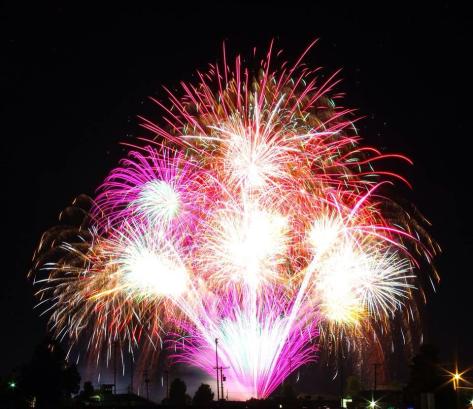July 4th is a spectacular day for photographers. You want to capture photographs of the American Spirit and that includes the fireworks at the end of the day. Time’s wasting, you haven’t had luck in the past, and you don’t need a biblical length tutorial, so let’s get down to brass tacks:
- Use a zoom lens. If you don’t have one, use a wide-angle lens.
- Use a tripod. If you don’t have one, position your camera on something still and flat.
- Use a remote shutter-release device. If you don’t have one, use the self-timer.
- Use ‘bulb’ mode. If you don’t have one, manually set your camera’s shutter to stay open longer, for a few seconds (from just before the firework erupts to just after).
- Don’t leave your shutter open too long—just a few seconds is usually fine.*
- ISO 100 is usually ideal.
- Apertures between f/1 to f/16 generally work best.
- Try to position yourself away from bright streetlights and other ambient lighting.
- Train your camera on the spot you want before the firework goes off. Anticipate the shot.
- Don’t use a flash. Period.
- Go wide. Remember you can crop into firework using photo-editing software later.
- Try to include some landscape in the frame, for scale and visual interest.
- Shoot upwind so that smoke moves away from you and doesn’t cause hazy photos.
- The earlier in the show that you take your shots, the less haze they’re likely to have.
- Watch to the show! Don’t miss it for the sake of photographing it.
There you have it, the basics that should get you those firework shots you’ve been longing to master. When you’ve taken some, share them with us. We love to see your work!
*If you want to photograph multiple bursts and need more than those few seconds, some people suggest putting a piece of black paper or foam in front of the lens between bursts.


